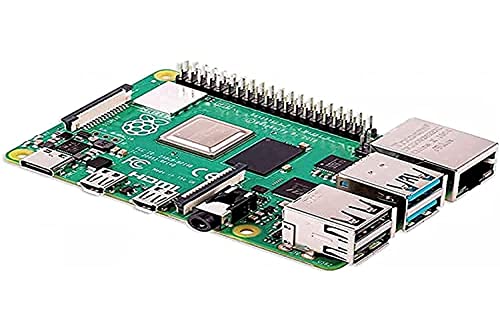Generating Weekly Income with Protective Put Options
Preamble

Several posts back, I mentioned that would likely write a post about an options strategy that generates consistent income along with providing protection from downside risk. This write-up is just that. Just remember that options are not for the faint of heart and they do carry considerable risks if not managed correctly.
Generating Weekly Income with Protective Put Options
Introduction
Put options can be used as a strategy for generating weekly income while providing downside protection. This white paper will discuss the concept of buying a long-term put option with a strike price slightly below the current share price and simultaneously selling short-term put options with a strike price close to the current share price. This strategy is known as a "Protective Put" or "Married Put" strategy. It can also be classified as a type of calendar spread, specifically a "Diagonal Put Calendar Spread."
Strategy Overview
The strategy involves the following steps:
- Buy a put option with a strike price slightly below the current share price and an expiration date 30 to 120 days in the future, possibly after the next earnings release.
- Sell a put option with a strike price as close to the current share price as possible and an expiration date within the next week.
- Ensure that the premium collected from selling the put option exceeds the cost of buying the long-term put option.
- Repeat the process of selling weekly put options to generate income while holding the long-term protective put.
Diagonal Put Calendar Spread
The protective put strategy can be classified as a diagonal put calendar spread because it involves buying and selling put options with different expiration dates and strike prices on the same underlying stock.
The main characteristics of this diagonal put calendar spread are:
- Different expiration dates: The bought put has a longer expiration date than the sold put.
- Different strike prices: The bought put has a lower strike price than the sold put.
- Income generation: The premium collected from the sold put is used to offset the cost of the bought put, generating potential income.
- Downside protection: The long-term bought put provides protection against significant price drops in the underlying stock.
By repeatedly selling short-term puts while holding the long-term protective put, the investor is essentially employing a series of diagonal put calendar spreads to generate weekly income and maintain downside protection.
Hypothetical Example

Suppose XYZ stock is currently trading at $100 per share. An investor could implement the strategy as follows:
- Buy a put option with a strike price of $95 and an expiration date 60 days in the future for a premium of $2 per share.
- Sell a put option with a strike price of $100 and an expiration date 7 days in the future for a premium of $1 per share.
In this example, the investor would collect a net credit of $1 per share ($1 premium from selling the put minus $2 paid for the long-term put). If the stock price remains above $100 at expiration of the short-term put, the investor keeps the premium and can repeat the process by selling another weekly put option.
Characteristics for Success
To successfully implement this strategy, consider the following characteristics of the options and underlying stock:
- Implied Volatility: Look for stocks with higher implied volatility, as this can lead to higher premiums for the sold put options.
- Liquidity: Choose stocks and options with high liquidity to ensure easy entry and exit of positions.
- Earnings Releases: Consider the timing of earnings releases when selecting the expiration date for the long-term protective put.
- Strike Prices: Select strike prices that balance the potential for income generation with the desired level of downside protection.
Repeating the Strategy
By selling weekly put options, investors can generate a consistent income stream. Each week, a new put option is sold, and the premium is collected. If the stock price remains above the strike price of the sold put at expiration, the option expires worthless, and the investor keeps the premium. This process can be repeated weekly, providing a regular income.
Risk Management and Possibility of Assignment
The long-term protective put serves as a hedge against significant downside risk. If the stock price drops below the strike price of the protective put, the investor has the right to sell the shares at the higher strike price, limiting their potential losses. However, it is important to note that this strategy caps the potential upside, as the short-term sold puts will be assigned if the stock price rises significantly.
When selling put options, there is always a risk of being assigned shares if the stock price drops below the strike price of the sold put at expiration. If this occurs, the investor is obligated to purchase the shares at the agreed-upon strike price, regardless of the current market price.
Assignment Scenarios
-
Stock Price Slightly Below Strike Price: If the stock price is only slightly below the strike price at expiration, the investor may choose to accept the assignment and purchase the shares. They can then hold the shares and sell covered call options to generate additional income or wait for the stock price to recover before selling the shares.
-
Stock Price Significantly Below Strike Price: If the stock price has dropped significantly below the strike price, the investor may face substantial losses upon assignment. In this case, the investor has a few options:
a. Accept the assignment and sell the shares immediately to limit further losses. b. Hold the shares and sell covered call options to generate income while waiting for the stock price to recover. c. If the investor believes the stock price will continue to decline, they may choose to sell the shares and close the position to avoid additional losses.

Managing Assignment Risk
To manage the risk of assignment, investors can implement the following strategies:
-
Protective Put: By purchasing a long-term protective put, the investor has the right to sell the shares at the strike price of the protective put, limiting their potential losses if assigned.
-
Rolling the Put: If the stock price is approaching the strike price of the sold put near expiration, the investor can "roll" the put by buying back the sold put and simultaneously selling a new put with a later expiration date and/or a lower strike price. This allows the investor to maintain the income stream and potentially avoid assignment.
-
Diversification: Diversifying across multiple stocks and sectors can help mitigate the impact of assignment on any single position.
-
Position Sizing: Properly sizing positions based on the investor's risk tolerance and portfolio size can help manage the overall impact of assignment.
Tax Implications
When assigned shares through a put option, the investor's cost basis in the stock is equal to the strike price of the put. Any subsequent sale of the shares will result in a capital gain or loss, depending on the sale price relative to the cost basis. It is essential to consider the tax implications of assignment and consult with a tax professional for guidance.
Risks and Limitations
While the protective put strategy can generate income and provide downside protection, there are risks and limitations to consider:
- Limited Upside: The short-term sold puts limit the potential profit if the stock price rises significantly.
- Assignment Risk: If the stock price drops below the strike price of the sold put, the investor may be assigned and required to purchase the shares at the agreed-upon price.
- Time Decay: The value of the long-term protective put will decrease over time due to time decay, which can erode the overall profitability of the strategy.
Conclusion
The protective put strategy, involving buying a long-term put and selling short-term puts, can be an effective way to generate weekly income while providing downside protection. This strategy can also be classified as a diagonal put calendar spread, as it involves buying and selling put options with different expiration dates and strike prices on the same underlying stock. By carefully selecting the underlying stock, strike prices, and expiration dates, investors can potentially benefit from this options strategy. However, it is crucial to understand and manage the associated risks, including limited upside potential and assignment risk. If assigned, investors must evaluate their options based on the specific circumstances and their market outlook. Understanding and effectively managing assignment risk is crucial for successfully implementing the protective put strategy for generating weekly income.
